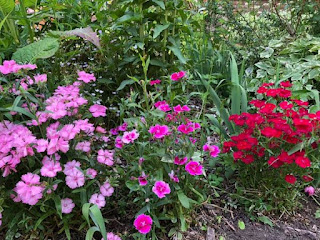On making population ecology attractive to undergraduate students
This semester I teach again at the Universidad Nacional del Comahue. This year, it is the turn of Population Ecology. I normally deliver this course every other year, alternating it with one on Behavioral Ecology.
I find the contrast between both courses quite interesting. Most topics I teach in animal behaviour have a clearer theoretical background (e.g., optimal foraging theory, the marginal value theorem, local mate competition or clutch size) and there are good textbooks that allow organizing students’ work. In addition, biology students are typically fascinated by what animals are capable of doing and on how evolution has modeled behaviour.
In population ecology things are less clear. For starters, there few if any updated proper textbooks. There are of course a number of books on the subject matter, but the focus is set on either the methods (best ways to estimate animal abundance, software tools, etc.), looking into specific aspects (such as population genetics), or else are edited volumes of specific works. While some of these texts are excellent guides for specific topics, the underlying theory is not always there. Of course, as a teacher one can always resort to the classical population growth models to kick-off, but one finds oneself struggling soon after, to avoid entering the somewhat duller road of more complex mathematical models or else falling into ruts of basic ecological knowledge.
Probably an important issue is that population ecology is a complex subject (what isn’t?) and as such may not be especially attractive to ecologists. On the one hand, there is less space for field experiments as they may need to encompass large spatial and temporal scales (but see the Kluane Forest experiment for a remarkable exception*). The current world of science funding, which rarely is for long-term work and the need for deliverables on which most of our careers depend on, does not help. Also, the necessity for digging into mathematics and elaborate statistics can beat back students from showing interest.
But is the need for a very clear theoretical framework part of the problem? I’m not sure about this, but I do think that there are a few routes than can be approached to make this essential part of ecology attractive. One of them are the Allee effects. The theoretical scenario is nice and clear, the background history makes a neat story and experiments that explore them are feasible. Allee affects translate straightforwardly to applied ecology. There neat examples in conservation biology as well as in pest management. For example, driving alien species towards extinction or else determining the size and number of events of release of biological control agents may rely on Allee thresholds. Finally, Allee effects observed in social insects may admit discussing some aspects of evolution of sociality and behaviour.
Another topic I like to teach, is the Nicholson-Bailey model. This model describes host- parasitoid interactions-remarkably common systems in nature- and its most extraordinary feature is that it predicts amplifying oscillations. Such instability has been and outstanding driver of research in the quest of those ‘stabilizing’ mechanism that allows to understand why such systems persist in nature. This represent to me is a fantastic story of how scientific research works (I recommend the book chapter by Carlos Bernstein on this**). It also allows to explore the role of models, play with in practicals and again has a nice applied angle to it, as parasitoids are often used as biological control agents.
I’m sure there are more examples. I here share only these two, that come to my mind while working on my slides for online classes. The challenge is there. Population ecology is at the base of much applied ecology (e.g., invasion ecology, resource management, pest management, conservation biology), is also key to understanding much of the workings of naturals systems and yet may prove to be not the most attractive of ecology courses.
Ideas welcome!
*Krebs, C; Boutin, S & Boonstra, R. 2001. Ecosystem Dynamics of the Boreal Forest: The Kluane Project. Oxford University Press, New York.
**Bernstein C
. 2000. Host-Parasitoid Models. The story of a successful failure. In Parasitoid Population Biology (pp.41-57) Princeton University Press.




Comments
Post a Comment